Like
the more well-known partnership of Grounds, Romberg & Boyd, the
firm of Hipwell, Weight & Mason (later Hipwell, Weight & Ross) was founded by three young
Melbourne architects who had already made names for themselves as
individuals: John Hipwell (1920-2007), Charles Weight (1927-1968) and
Peter Mason (1932-1962). Sadly, after a very promising start in
the early 1960s, the firm had petered out by the end of the decade
after the early and tragic deaths of two of its three original partners.
Born on 30 November 1920 in the Victorian town of Leongatha, John Buckland Hipwell was educated at the state school in nearby Maffra and later attended Scotch College in Melbourne. His architectural studies at the University of Melbourne were interrupted by the Second World War, during which Hipwell served with the 3rd Australian Survey Company (as did several other soon-to-be prominent Melbourne architects, including Neil Clerehan, Robin Boyd and Kevin Pethebridge). Completing his degree in 1948, Hipwell worked for architects Fritz Janeba and later Martin & Tribe. When Horace Tribe left to begin his own practice in mid-1949, he took Hipwell with him. Elected as an associate of the RAIA in 1951, Hipwell opened his own office two years later. He started by designing a striking flat-roofed glass-walled house for himself in Warrandyte, which was widely published in the local architectural press. Hipwell went on to design several other houses, most of which were located in Melbourne's outer north-eastern suburbs, near where he lived. One of Hipwell's more unusual commissions was re-dressing the lower room of the Melbourne Town Hall to resemble the interior of a ship, the S S Australiana, for an exhibition of local literature organised by the Australian Book Fair Council.
Seven years Hipwell's junior, Charles Ernest Weight began his architectural career in the early 1950s in the office of Frederick Romberg. Weight was elected as an associate of the RAIA in 1952 and, by the following year (coinciding with Romberg entering into partnership with Roy Grounds and Robin Boyd), had opened his own office. Like John Hipwell, Weight commenced his independent practice by designing a house for himself, which (as had been the case for Hipwell) garnered much attention in the architectural press. Weight went on to complete several other residential projects, as well as commissions for factories and a medical clinic.
Five years younger than Weight and twelve years younger than Hipwell, Peter Mason completed a Diploma of Architecture at the Melbourne Technical College (now RMIT) and a Bachelor of Architecture at the University of Melbourne. He became an associate of the RAIA in 1955 and obtained a position in the office of H A & F L Norris. In 1957, while still working there, Mason and three other young architects entered a design competition for the "Ideal Family Home", and won second prize.
It was around 1960 that John Hipwell, Charles Weight and Peter Mason came together to form the partnership of Hipwell, Weight & Mason. After Mason was killed in a car accident in 1962, he was replaced as partner by architect Albert William Ross (1931-). One of the original staff members in the partnership of Grounds, Romberg & Boyd (where he also first met Charles Weight), Ross won the Robert & Ada Haddon Travelling Scholarship for 1960. Two years later, he achieved more fame after he and J Dale Fisher won a consolation prize for their highly-regarded entry in the design competition for the new Reserve Bank of Australia in Canberra.
After several successful years in practice as Hipwell, Weight & Ross, the partnership underwent its second tragedy with the death of Charles Weight in 1968, aged only 41 years. The firm was dissolved, whereupon John Hipwell took a position in the Public Works Department and Albert Ross resumed private practice on his own. In early 1989, after nearly forty years as a registered architect in Victoria, Hipwell ceased his registration, informing the board that "I have been retired from architecture practice for some years and have now retired completely from all business activities". Hipwell died on 16 June 2007 at the age of 86 years.
Born on 30 November 1920 in the Victorian town of Leongatha, John Buckland Hipwell was educated at the state school in nearby Maffra and later attended Scotch College in Melbourne. His architectural studies at the University of Melbourne were interrupted by the Second World War, during which Hipwell served with the 3rd Australian Survey Company (as did several other soon-to-be prominent Melbourne architects, including Neil Clerehan, Robin Boyd and Kevin Pethebridge). Completing his degree in 1948, Hipwell worked for architects Fritz Janeba and later Martin & Tribe. When Horace Tribe left to begin his own practice in mid-1949, he took Hipwell with him. Elected as an associate of the RAIA in 1951, Hipwell opened his own office two years later. He started by designing a striking flat-roofed glass-walled house for himself in Warrandyte, which was widely published in the local architectural press. Hipwell went on to design several other houses, most of which were located in Melbourne's outer north-eastern suburbs, near where he lived. One of Hipwell's more unusual commissions was re-dressing the lower room of the Melbourne Town Hall to resemble the interior of a ship, the S S Australiana, for an exhibition of local literature organised by the Australian Book Fair Council.
Seven years Hipwell's junior, Charles Ernest Weight began his architectural career in the early 1950s in the office of Frederick Romberg. Weight was elected as an associate of the RAIA in 1952 and, by the following year (coinciding with Romberg entering into partnership with Roy Grounds and Robin Boyd), had opened his own office. Like John Hipwell, Weight commenced his independent practice by designing a house for himself, which (as had been the case for Hipwell) garnered much attention in the architectural press. Weight went on to complete several other residential projects, as well as commissions for factories and a medical clinic.
Five years younger than Weight and twelve years younger than Hipwell, Peter Mason completed a Diploma of Architecture at the Melbourne Technical College (now RMIT) and a Bachelor of Architecture at the University of Melbourne. He became an associate of the RAIA in 1955 and obtained a position in the office of H A & F L Norris. In 1957, while still working there, Mason and three other young architects entered a design competition for the "Ideal Family Home", and won second prize.
It was around 1960 that John Hipwell, Charles Weight and Peter Mason came together to form the partnership of Hipwell, Weight & Mason. After Mason was killed in a car accident in 1962, he was replaced as partner by architect Albert William Ross (1931-). One of the original staff members in the partnership of Grounds, Romberg & Boyd (where he also first met Charles Weight), Ross won the Robert & Ada Haddon Travelling Scholarship for 1960. Two years later, he achieved more fame after he and J Dale Fisher won a consolation prize for their highly-regarded entry in the design competition for the new Reserve Bank of Australia in Canberra.
After several successful years in practice as Hipwell, Weight & Ross, the partnership underwent its second tragedy with the death of Charles Weight in 1968, aged only 41 years. The firm was dissolved, whereupon John Hipwell took a position in the Public Works Department and Albert Ross resumed private practice on his own. In early 1989, after nearly forty years as a registered architect in Victoria, Hipwell ceased his registration, informing the board that "I have been retired from architecture practice for some years and have now retired completely from all business activities". Hipwell died on 16 June 2007 at the age of 86 years.
Select List of Projects
John Hipwell
| 1953 1956 1958 | Residence for J B Hipwell, Research Road, Warrandyte [destroyed in bushfire, 1962] Exhibition fitout for Australian Book Fair Council, Melbourne Town Hall, Melbourne Residence, Drysdale Road, Warrandyte Residence for V Walker, 209 Main Road, Lower Plenty |
Charles Weight
| 1954 1956 1957 | Residence for self, 1 Gracefield Drive, Box Hill Factory for Preswell Panels Pty Ltd, Abbott Street, Fairfield Medical clinic, Dandenong Road, Oakleigh East Residence for E Gallaher, York Avenue, Ivanhoe East |
Hipwell, Weight & Mason
| 1959 1960 1961 | Presbyterian Church, Warrandyte [destroyed in bushfire, 1962] Residence, 413 The Boulevard, Ivanhoe Residence, 369 The Boulevard, Ivanhoe Residence, Barnard Grove, Kew Residence, Orsborne Road, Warrandyte Mordialloc Pre-School Centre, 26 Park Street, Mordialloc Residence, Annetta Court, Glen Waverley |
Hipwell, Weight & Ross
| 1963 1964 1965 1966 | St John's Presbyterian Church, Taroona Avenue, Warrandyte Residence, Somers Road, Warrandyte Residence, Willonga Road, Strathmore Holiday residence, Point Lonsdale Residence, Eumeralla Avenue, Doncaster Residence, Edgecombe Road, Geelong West Residence, Willow Grove, Mildura Residence, Flora Road, Donvale Residence, 349 The Boulevard, Ivanhoe East |
Albert W Ross
| 1970 1973 | Residence, Pascoe Vale Road, Strathmore Residence for self, Elsternwick |
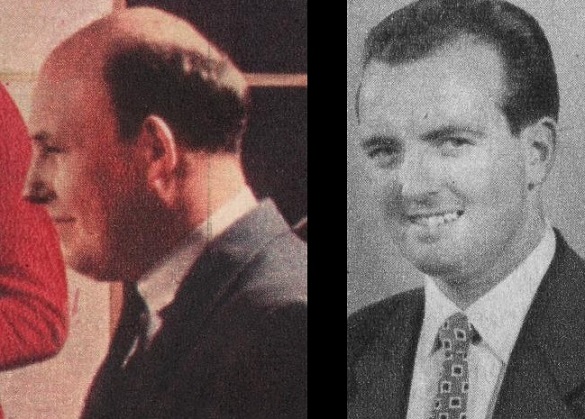 | |
| John Hipwell (left) and Peter Mason in the mid-1950s |
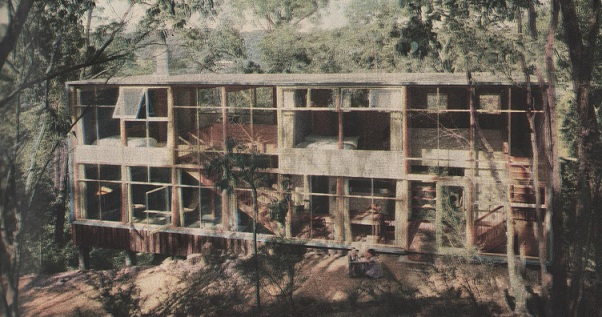 | |
| John Hipwell's own house in Warrandyte (1954) |
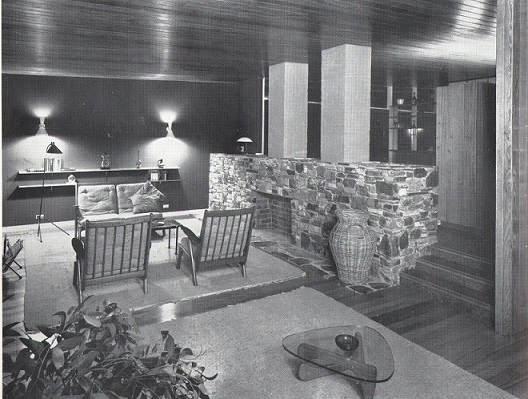 | |
| Interior of Charles Weight's own house in Box Hill (1954) |
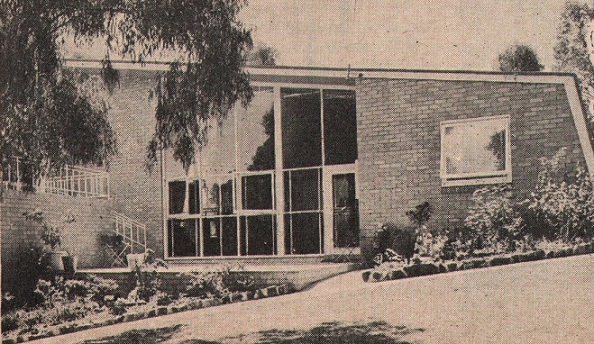 | |
| Residence, 209 Main Road, Lower Plenty (1958) |
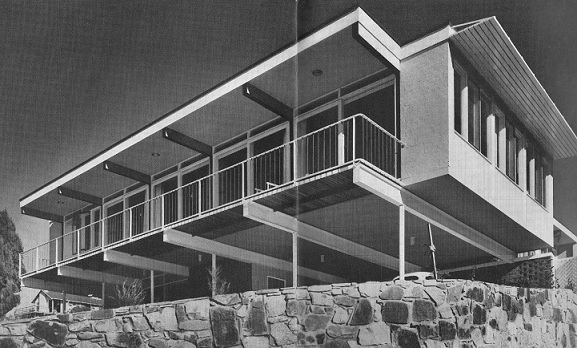 | |
| House at Ivanhoe by Hipwell, Weight & Mason (1960) |
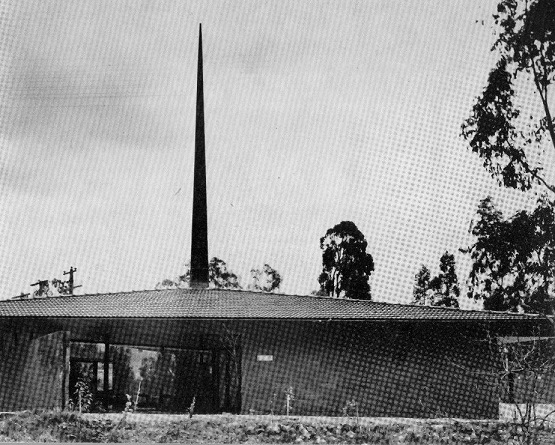 | |
| St John's Presbyterian CHurch, Warrandyte (1963) |
